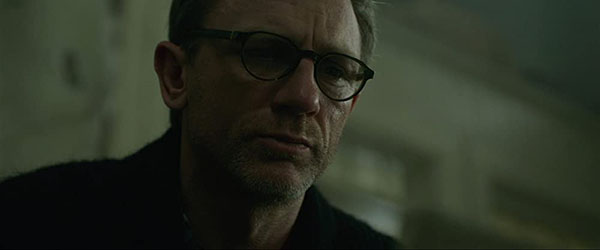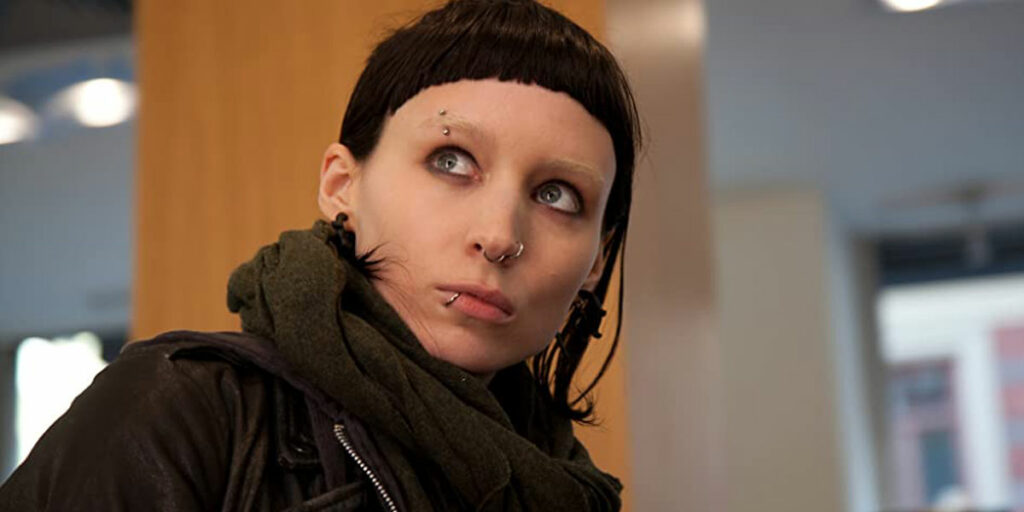David Fincher’s The Girl With The Dragon Tattoo is not only a well-acted, visually stunning neo-noir thriller, but the first in a trilogy that was unjustly scrapped.
David Fincher’s The Girl With The Dragon Tattoo was meant to kick start a trilogy. Adapted from the first book in Stieg Larsson’s ‘Millennium’ series of Swedish crime novels, it was also, essentially, an English-language version of the Swedish film Män som hatar kvinnor (literally translated: ‘Men who hate women’) by Niels Arden Oplev. That film was one of three, all released in the same year, and also based on Larsson’s novels. It was a critical and commercial success, and boosted the careers on both sides of the Atlantic for star Noomi Rapace and the late Michael Nyqvist. Why then, have Fincher’s versions of books two and three never materialised?
The likely answer, unfortunately, is money. Fincher’s film was nominated for five Academy Awards, winning one for ‘Best Editing’, and made almost a quarter of a billion dollars worldwide. But it didn’t storm out of the gate, having been marketed specifically for mature audiences and staying pretty faithful to the dark, visceral and often bleak source material. Fincher had plans for the further two films – ‘The Girl Who Played with Fire’ and ‘The Girl Who Kicked the Hornets’ Nest’ – and began working on story ideas and scripts not long after the film’s release. But they were ultimately abandoned.
And that is, genuinely, a real shame. Because Fincher’s The Girl With the Dragon Tattoo is so much more than just ‘another American remake’ and deserved to have its story completed. It luxuriates in its characters, looks absolutely beautiful, and isn’t afraid to go as dark as it needs to. The film is neo-noir in the best way, intricately plotted and delightfully twisty, with a star-making (and Oscar nominated) turn from Rooney Mara, an arguably career-best Daniel Craig and a supporting cast that includes the likes of Stellan Skarsgård, Christopher Plummer, Robin Wright and Joely Richardson.

It begins with a mystery. Henrik Vanger (Plummer) receives a framed flower every year for his birthday, the likes of which he used to receive from his niece Harriet before her disappearance almost four decades earlier. He wants to know who is taunting him, and hires journalist Mikael Blomkvist (Craig) to investigate the cold case and find out. Mikael is a bit shocked to be asked, having been recently disgraced over a libel suit brought against him, but is encouraged to take the case by his editor/lover Erika Berger (Wright).
So he packs up and moves to a cabin on the remote estate the wealthy Vanger and his extended – if estranged – family live on, officially tasked with ‘writing his memoirs’ and unofficially finding the culprit. Lisbeth Salander (Mara) is a brilliant but antisocial computer hacker who Blomkvist enlists the help of, after the extremely detailed report she made on him for Vanger is discovered. The pair unravel the mystery of Harriet’s disappearance together and discover a gruesome connection to the prolific serial killer who has brutalised women across Sweden for more than forty years.
The Girl With The Dragon Tattoo is not for the faint hearted. It depicts violent sexual assault, murder and torture. It’s bleak, intense and brutal, but an underrated gem in Fincher’s impressive back catalogue. It differs from Oplev’s initial adaptation, sticking closer to Larsson’s book and fleshing out Blomkvist as much as Salander. Craig and Mara have a really interesting dynamic, with their relationship evolving from reluctant allies to something akin to friends and sexual partners. Their initial sharp edges become softer as they grow more comfortable with each other and, despite the unpleasantness of the work, it is rewarding to spend time with them.
Craig’s Blomkvist is a far cry from James Bond, the action hero he was known for upon the film’s initial release, and it is perhaps one of his best performances to date. As man whose career might be ruined, he spends a lot of the film with rough stubble and bleary eyes, in a collection of knitted cardigans and pyjama bottoms with his glasses awkwardly hanging on one ear. Fincher and writer Steven Zaillian have him undertake a pretty convoluted investigative journey, much like his paperback counterpart, but it never feels overdramatic or ungenuine. Blomkvist is an interesting entry point to this story, and Craig keeps the audience on side for the entire film.
But while Blomvkist is the everyman ‘hero’ of the story, the star is undoubtedly Mara’s Lisbeth Salander. With her dyed-black mohawk, numerous facial piercings, tattoos, leather-heavy wardrobe and take-zero-bullsh*t attitude, Lisbeth cuts an intimidating figure. But as a ward of the state, heavily reliant on awarded funds and illegal work for her computer equipment, there’s a raw to her that’s really intriguing.
Mara – who did indeed dye her hair, bleach her eyebrows and pierce parts of her face for the role – portrays a Lisbeth who is guarded, projecting ‘F*CK OFF’ with her physicality and not just literally on her t-shirt, but also with vulnerability. There’s a brightness to her eyes, a fire that’s not exactly in keeping with her stoic exterior, but showcases just how much depth there is to her character. As she’s victimised and brutalised by her supposed legal ‘guardian’ (Yorick van Wageningen), it fuels her desire to help Mikael catch this ‘killer of women’, and Mara plays it all exquisitely.
The Girl With The Dragon Tattoo is not just narratively impressive, keeping the tension up from start to finish as it brilliantly explores the whodunnit elements of Larsson’s original novel, but also stylistically stunning. From the stark, harsh whites of a chilly snow-covered Sweden to the sepia-toned, warm intimacy of the interior drama, Fincher – and cinematographer Jeff Cronenweth – consistently emphasise the details.
Whether it’s a rapid-cut sequence of photos and newspaper clippings to deliver exposition, a lingering shot of the rural landscape to emphasise being in the middle of nowhere, or a standard mid-shot that lets Mara’s Lisbeth cycle through a host of emotions as she watches Mikael walk arm in arm with someone else, every frame feels curated. Trent Reznor and Atticus Ross’ soundtrack is terrific too, tense and pulsating with harsh, grating sounds that shouldn’t work but inexplicably do.
It’s a film that won’t be for everyone, but is an experience for everyone who watches it. It depicts shocking sexual violence with nary a flinch, but doesn’t make it scintillating. It is horrific and upsetting and flinch-inducing, because those acts are all of those things in reality. Perhaps they’re unnecessary – the tendency for men to commit horrendous violence against women is not exactly new or noteworthy, nor does it need to be visualised to be understood – but it doesn’t feel as though they’re inexplicably included for shock value. Lisbeth’s had a rough, unfathomable beginning, and the fact that her work and outlook flourishes with Mikael gives hope to a brighter future for her within Fincher’s now standalone film. (Those familiar with the source material and the Oplev’s films will know that’s not exactly how it goes, but we can pretend.)
Revisiting The Girl With The Dragon Tattoo is a reminder of how unfortunate it is that we’ll likely never explore the intricacies of Larsson’s dark series through Fincher’s expert lens again. Mara and Craig deserved more than one kick at the can, and we as an audience deserved the chance to spend more time with their interpretations of Lisbeth and Mikael. For now though, a rewatch is the next best thing – just make sure to take some recovery time between each go around.
The Girl With The Dragon Tattoo is now available to watch on digital and on demand.

